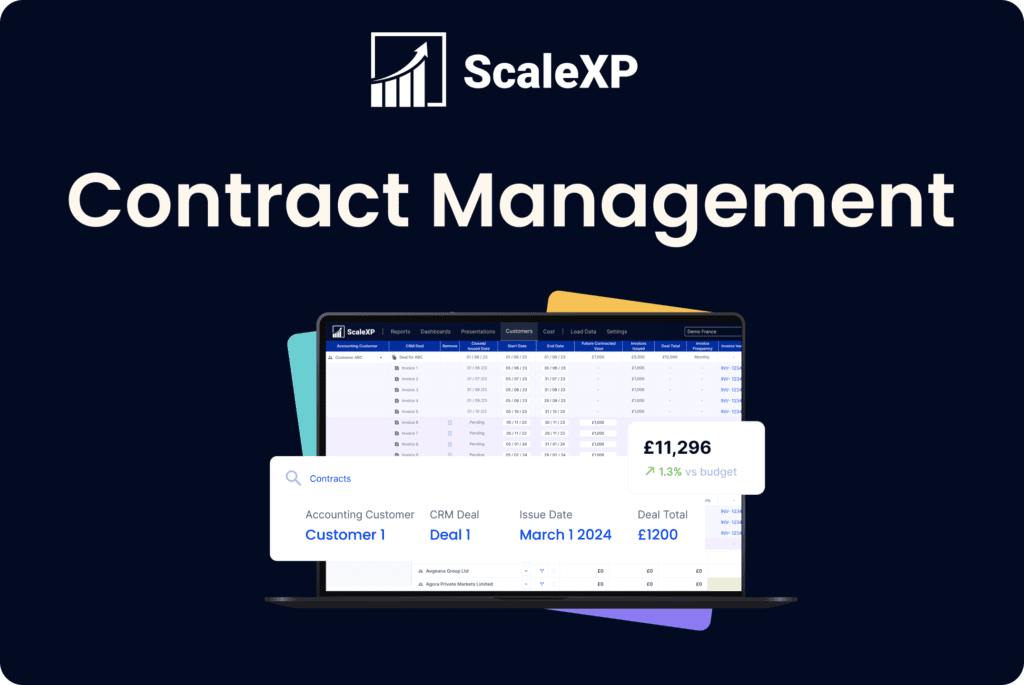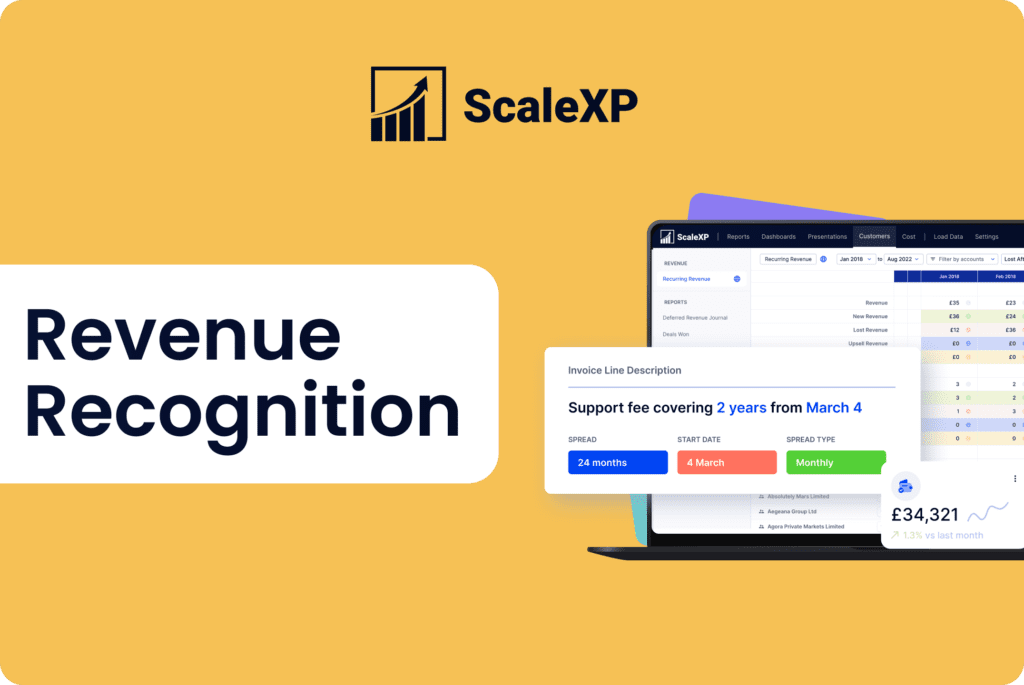Revenue Recognition in SaaS: Key Methods
- Life of Contract: Revenue is spread evenly over the subscription period (best for long-term contracts).
- Percent Completion: Revenue is recognised based on how much of the project is finished (ideal for construction, custom manufacturing).
- Cost Recovery: Delays revenue recognition until all costs associated with the sale are paid off (used when payment is uncertain).
Introduction
The intricacies of revenue recognition have intensified with the growth in technology and diversification of services. The implementation of ASC 606 and IFRS 15 has introduced structured frameworks for addressing these complexities, yet many SaaS businesses still face challenges in their practical application.
This article will explore various revenue recognition methods to help you choose the method that best aligns with your specific business models and financial objectives.
Understanding Revenue Recognition under ASC 606 and IFRS 15
ASC 606, “Revenue from Contracts with Customers,” was issued by the Financial Accounting Standards Board (FASB) on May 28, 2014. This standard is a part of the Generally Accepted Accounting Principles (GAAP) in the U.S. – shaping revenue recognition practices for U.S.-based companies. While ASC 606 mainly impacts U.S. accounting practices, its influence extends to international accounting standards.
Similarly, IFRS 15, titled the same as its U.S. counterpart, was issued by the International Accounting Standards Board (IASB). IFRS 15 has broader international adoption, applying to many countries that follow the International Financial Reporting Standards (IFRS). Issued on the same day as ASC 606, both standards mark a joint effort to harmonise revenue recognition practices globally.
The two standards are broadly the same as applied to both businesses. However, they are not identical, maintaining some distinct applications based on jurisdiction. With this in mind, it’s always best to check with a professional accountant in your reporting region for questions requiring qualified advice.
The Essence of ASC 606 and IFRS 15 Revenue Recognition
Both ASC 606 and IFRS 15 provide frameworks for recognizing revenue from customer contracts, aiming to standardise practices across various industries, including SaaS.
They share a common five-step model:
- Identifying the customer contract
- Specifying performance obligations
- Setting the transaction price,
- Allocating the transaction price to performance obligations
- Recognising revenue when these obligations are satisfied
This model ensures consistent and accurate revenue recording which enhances financial statement comparability.
The Importance of Accurate Revenue Recognition
For SaaS businesses where services and products often come bundled in complex packages, adhering to ASC 606 and IFRS 15 is crucial. Accurate revenue recognition influences stakeholder perception, guides investment decisions, and is integral to strategic planning. Compliance with these standards ensures that revenue and associated costs are accurately reported, offering a true reflection of a company’s financial health.
Exploring Revenue Recognition Methods for SaaS
In the SaaS industry, choosing the right revenue recognition method is key to ensuring accurate financial reporting and compliance with ASC 606 and IFRS 15. These methods include:
- Sales-basis method: Recognizes revenue at the point of sale or upon service delivery, applicable to one-time purchases or short-term subscriptions in SaaS.
- Percentage of completion method: Suitable for long-term projects, recognizing revenue based on project progress.
- Completed contract method: Revenue is recognized once the entire contract is fulfilled, ideal for projects with indistinct progress indicators or shorter engagements.
- Cost recovery method: Recognizes revenue only after recovering all costs incurred in fulfilling the contract, typically used when there’s uncertainty in cost recovery.
- Installment method: Applies to long-term contracts with staggered payments, recognising revenue as payments are received.
Other methods such as input method revenue recognition, the accrual method, brokerage agreement, proportional performance, appreciation method, deposit method, and bill and hold transactions offer varied approaches to revenue recognition, catering to different SaaS business models and contract types.
Selecting the Right Method for Your SaaS Business
Choosing the most suitable revenue recognition method requires a detailed analysis of the business model, the nature of contractual obligations, and the financial realities of the company. Factors such as the type of SaaS model (subscription-based, pay-per-use, freemium), complexity of customer contracts, and the need for financial transparency should guide this decision-making process.
Implementing Revenue Recognition in SaaS
Integrating the chosen revenue recognition method into a SaaS company’s overall financial planning and analysis is crucial. It’s more than a compliance exercise; it’s a strategic decision that reflects the business’s economic activities. Consistency in revenue recognition across reporting periods and compliance with GAAP and IFRS are essential.
Role of Technology in Simplifying Revenue Recognition
Modern financial technologies play a pivotal role in simplifying revenue recognition.
ScaleXP, for instance, offers automated revenue calculations, real-time financial insights, and ensures compliance and audit-readiness, making it an effective tool for SaaS companies. Moreover, ScaleXP offers simple, time-saving ways of recognising revenue by service length, percent completion, usage and more, all with easy setup and implementation.
Leveraging ScaleXP for Revenue Recognition
ScaleXP stands out as an effective tool for SaaS companies looking to manage their revenue recognition needs efficiently. Its intuitive interface and advanced analytical capabilities make it an ideal choice for businesses aiming to navigate the complexities of revenue recognition while maintaining compliance and accuracy in their financial reporting.
- User-friendly dashboard: ScaleXP provides a clear and concise view of revenue streams, making it easier to analyse and report revenue as well as quickly identify reasons for changes in it.
- Customisable to business needs: Whether it’s a subscription model or a mix of various revenue streams, ScaleXP adapts to the unique needs of a SaaS business. It is easy to set up and to adjust to a variety of product and contract types, including rule-based, usage based, and time based models.
Streamlining financial processes: ScaleXP simplifies processes around tracking revenue, incorporating text recognition software with automated journals and analytics, thus saving time and reducing the likelihood of errors.
Conclusion
Navigating the complexities of revenue recognition in the SaaS industry is a critical task that demands both strategic thinking and the right technological tools. By understanding different revenue recognition methods and aligning them with business strategies, SaaS companies can ensure accurate and compliant financial reporting.
Implementing a solution like ScaleXP can further simplify this process, offering seamless integration and real-time financial insights. As SaaS businesses continue to grow and evolve, mastering efficient, accurate revenue recognition will be a key factor in the sustainable growth and success of these businesses.
Check out more from ScaleXP

How to automate prepaid expenses
Automating prepaid expenses, the costs a business pays upfront for future goods or services, not only saves time but also

How to automate Hubspot invoicing in QuickBooks
Easily invoice Hubspot deals in QuickBooks using ScaleXP Looking to streamline your invoicing process between HubSpot and QuickBooks? If your

Revenue recognition automation
Revenue recognition: a guide Revenue recognition is a crucial aspect of financial reporting, ensuring that companies accurately reflect their earned




